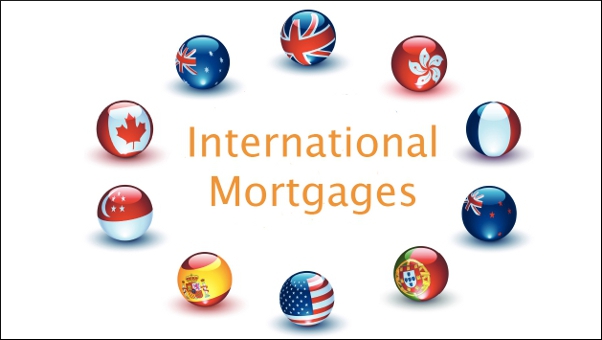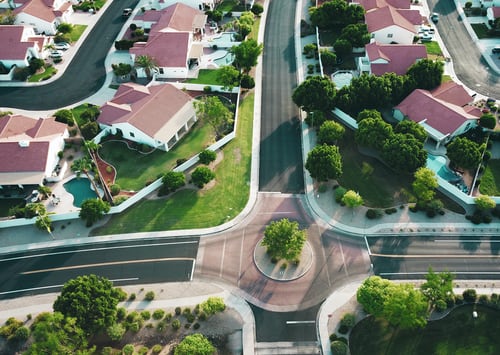
When looking to buy a property overseas one of the most challenging things to consider is how best to fund your investment so that you can get the most out of your money. One option that is often overlooked is foreign currency and multi-currency mortgages because they can seem a bit complicated, but these are actually a great vehicle for funding an investment overseas such as a holiday home.
What is a foreign currency and a multi-currency mortgage?
A foreign currency mortgage is where you borrow money in a currency other than your local one. In the case of a multi-currency mortgage, it is where you have the option of splitting your mortgage borrowings into more than one currency or even switching between currencies. For example if you live in Singapore and take a multi-currency mortgage on a property in Australia, your mortgage may be partly in Singapore Dollars and partly in Australian Dollars. You can potentially borrow in a third currency as well, such as US Dollars, but generally banks will require the currencies chosen to reflect either the currency you receive your income in or the currency that the property is purchased in.
What are the benefits of a foreign currency and a multi-currency mortgage?
Foreign currency mortgages allow you to borrow money at an interest rate that is applicable to the foreign currency. For example, if you borrowed funds in Singapore Dollars at the present the interest rate on your mortgage could be as low as 3.5%, whereas a variable mortgage in Australian dollars at present may attract an interest rate of up to 7%. This makes borrowing in Singapore Dollars an attractive option, even if you are purchasing a property in Australia.
A benefit of a multi-currency mortgage is that you may be able to switch between currencies over the course of your mortgage, thereby reducing the amount you have borrowed. So if one currency strengthens against another, by switching the currency of the loan you will also change the amount borrowed in the currency conversion. For example if you took out a loan in Singapore Dollars a year ago for S$132,000 and switched it to Australian Dollars immediately, the loan value would have been A$100,000. A year later, foreign exchange fluctuations mean that the A$100,000 is now worth S$128,000, so if you switch the loan back to Singapore dollars you will have shaved $4,000 off your loan, assuming everything else remained constant. By switching between currencies, you can reduce the value of your mortgage considerably.
What are the downfalls of a foreign currency and a multi-currency mortgage?
The biggest downfall of a foreign currency mortgage is the same as its benefits, the foreign exchange risks. Foreign currency movements can happen quickly and quite unexpectedly, which can have a huge impact on your borrowings if they don’t go in your favor. Generally multi-currency mortgages allow you to change currencies over the course of the mortgage, but there are likely to be limits on how quickly and frequently you can switch currencies. Which means you may have to wait several months after an unfavorable exchange fluctuation before you can mitigate the damage.
In some circumstances, particularly if the loan to value ratio increases too much as a result of a foreign currency change, the lender may also automatically convert the loan to another currency. This will change both the interest rate on the loan and the amount you have borrowed. To try and avoid this happening, it is critical that you actively manage your foreign currency mortgage, or employ a professional who understands foreign currency markets to manage it for you.
Similarly, if interest rates increase in the currency you have borrowed in, then your repayments will also increase. Depending upon the terms of your loan, you may not have the flexibility to switch currencies (and interest rates) quickly.
Generally a foreign currency mortgage may also require you to outlay a higher deposit than you may need on a single currency mortgage. This may be at least 30% of the value of the property, but the lending criteria will vary depending upon the bank. Some lending institutions may also require additional funds to be held in the account to cover future mortgage payments or closing costs on the mortgage to ensure they cover any additional perceived risks.
Another thing to consider will be the taxation consequences of both your investment and financing decisions. These will vary considerably depending upon your personal circumstances, the country you live in, earn in and are buying property in and they type of mortgage you take out. It is strongly recommended that you seek advice from someone who is familiar with international investments before finalizing your financing arrangements.
Where can I get a foreign currency mortgage?
Many international banks offer foreign currency and multi-currency loans. Most will offer loans in major stable currencies including US Dollars, Singapore Dollars, Japanese Yen, Australian Dollars and Pounds Sterling. It is worthwhile speaking to a few different banks and shopping around to see what terms they offer.
Whilst it may sound a bit complicated, borrowing funds to buy your holiday home using either a foreign currency or multi-currency mortgage can have significant financial advantages for you and increase the value of your investment. It is critical that you understand the terms of your loan including how much flexibility you have to switch between currencies if there is a sudden foreign currency fluctuation. It is also important that you keep a watchful eye on the foreign currency markets and understand how different fluctuations in both exchange rates and interest rates will impact your investment.
If you go in understanding the risks and monitor your loan, you can make substantial gains by using these financial tools.
To get more information & assistance, please submit the form below and our specialist will get in touch with you at the earliest.







